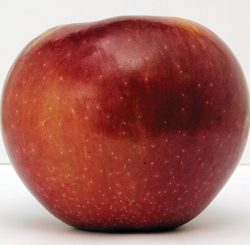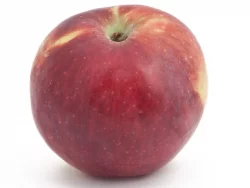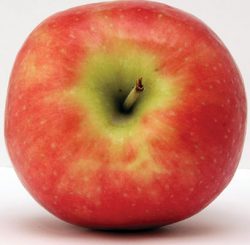Three Disease Resistant Apple Trees
Apple trees take maintenance to grow healthy fruit. Fruiting trees will produce more fruit with pruning and spraying for insects and disease each season. There have been trees that have been developed that have higher disease resistance that can reduce spraying and have a higher chance of fighting off disease.
Here are three disease resistant apple trees we recommend for beginning orchardists.
Hazen

Mature size: 10-15 ft. H x 10-12ft. W
Blooms: Early spring
Ripens: Late August – Early September
Flavor and fruit characteristics: Fruit is large and dark red. Flesh green-yellow, juicy. Flavor is sweet but mild, pleasant for fresh eating, cooking, and as a dessert apple.
Years to bear fruit: 3 to 4
Notes: Does well in disease resistance even if you forget to spray.
Apple tree pairing for optimum pollination:
Haralson, Honeycrisp, Sweet Sixteen
Liberty

Mature size: 12- 15ft. H x 12-15ft W
Blooms: Early to Mid-spring
Ripens: September
Flavor and fruit characteristics: Large red fruit size that has a yellow background s, a crisp white flesh, and a sweet-tart taste. Perfect for fresh eating, cooking, canning or storing. Keeps well into February
Years to bear: 2 to 5
Notes: Natural disease resistant to apple scab, cedar apple rust, fire blight, and powdery mildew.
Apple trees for optimum pollination:
This tree can self-fruitful but your tree will produce more with these early-mid spring blooming varieties – Freedom, Golden Delicious, and McIntosh
Freedom

Mature size: 12-15ft H x 12-15ft W Lovely spreading canopy.
Bloom time: Mid-spring
Ripens: Late September
Flavor and fruit characteristics: Large juicy sweet apples that are wonderful to eat fresh, cook or bake with. Has some tartness to it. Wonderful for ciders and juicing. Stores well.
Years to bear: 2 to 5
Notes: Disease resistant to apple scab, cedar apple rust, powdery mildew, and fire blight
Apple tree pairing for optimum pollination – Liberty and Cortland but also be self-fruitful.
